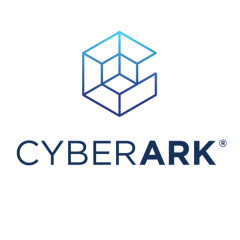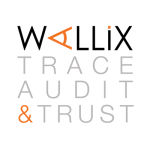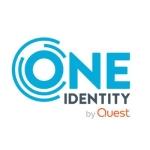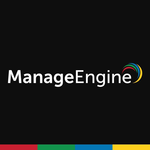What is our primary use case?
The major use case for us is to securely release and manage passwords for non-personal accounts.
CyberArk provides an automated and unified approach for securing access across environments. It's a work in progress but that is the goal, for us, of implementing CyberArk. We want to provide a unified way to access all environments. We are in transition, like most big companies, into cloud solutions. So this is also something that is being discussed and analyzed. But that, overall, is the mission of CyberArk in our organization.
How has it helped my organization?
CyberArk has made it possible to work with non-personal accounts. Before, there was a much more focus on having privileges associated with personal accounts, and non-personal accounts were scarcely used because doing so required a lot of manual work. That work has been replaced with automated password management and the controls that come with CyberArk. It allows our organization to control the risks associated with high privileges. Previously, anyone could do whatever they wanted, on their own, but now we can enforce dual control. That is very important from a risk perspective. And the fact that we have it automated means it doesn't require that much effort to maintain things.
Also, when we onboard new employees, the solution saves us time, to a certain extent, when it comes to providing them with secure access to the applications and IT systems they will be working with. Those savings are not directly thanks to CyberArk, but it can be considered part of the bigger solution to make sure that employees have the correct access to the resources they need as soon as possible. That is true after they have been onboarded or when their position has changed and they need to be granted new access.
What is most valuable?
The automatic password management is the most important feature. The second most important feature is the ability to enforce dual control on the release of those passwords. The combination of these two features is the most important thing for us because we can show that we're in control of who uses any non-personal account, and when they do so.
For how long have I used the solution?
I have been using CyberArk Privileged Access Manager for five years.
What do I think about the stability of the solution?
My impression of the solution's stability, in general, is very positive. It's quite robust. There are mechanisms in place that allow you to have high availability and that allow you to have proper disaster recovery. Those mechanisms are very solid, as we have tested them extensively within our processes to assess the risk associated with the use of CyberArk. They have performed very well.
The only thing that is lacking with respect to the stability is the scalability issue. The amount of data we need processed is too big for CyberArk to manage properly. That mostly impacts performance, not the stability, but to some extent the stability has suffered due to that.
But overall, I would rate it very good in terms of stability. We had a minor issue once and, other than that, we have been online the whole time that I have been here. We have tested it thoroughly and have not found any situation where it would become too unstable to perform our tasks.
What do I think about the scalability of the solution?
The major pain point that we have is the capacity of CyberArk due to the sheer volume of NPAs that we are managing. We are a large organization and we have hundreds of thousands of non-personal accounts to manage. We have already found out that there are certain capacity limitations within CyberArk that might introduce performance issues. From my perspective, something that would be valuable would be if the Vault could hold more passwords and be more scalable.
How are customer service and support?
We have used their tech support extensively and there has been a lot of improvement in the way that CyberArk support operates over the last few years, but it still leaves somewhat to be desired. That is particularly true given the pricing. You would expect, for the amount of money that they charge for their support, and for their product in general, that it would be better.
But I've seen major improvements in the last couple of years. I think they are aware of this issue and that it is an area that they are lacking in and they're working towards improving it.
They need to better recognize who they are dealing with. CyberArk has an extensive training program, the CyberArk University. You put in a lot of effort, resources, and money, to attend the training and become a professional in terms of your knowledge and ability to manage the Vault, and the solution in general. But then, when you require support, you are asked very simple questions, which you have already answered based on the knowledge that you've obtained from CyberArk. It takes a lot of time and effort to convince their support that you indeed have a more complex case to resolve, rather than a very simple fire-and-forget solution. It's generally not the kind of thing where they can give you a link to their knowledge base and look through it to find a solution yourself.
I have been working with CyberArk for five years and have all the possible certificates, and have extensive knowledge about it. Any time that I report a case to support, it seems the general gist of how such services operate is that they're trying to get rid of you. They give you a solution that, maybe, vaguely resembles the issue, or a solution that you specifically stated that you tried already and it does not work, just to get rid of you. They probably have customers who would be happy with that, but because of the importance of that software within our organization and the level of maturity that we have within my team as administrators of CyberArk, we expect, and we've communicated this to them, that they will approach our requests in a more advanced way.
They should recognize that we have probably already done what the first line of support would suggest be done, and that we require some more involved support, but it seems very difficult to communicate this to them. Even if we get through to further lines of support, we often have the feeling that we still know more than they do about their own tools. I think there has been some sort of knowledge drain from CyberArk. We often have the feeling that they are learning on the job. They don't inspire a lot of confidence when it comes to their support.
How would you rate customer service and support?
What was our ROI?
There is a lot of return on investment in CyberArk. Being a financial institution, we are responsible for managing risks, and CyberArk really helps us to be in control with the usage of NPAs. That, in turn, translates into a proper risk score for the organization, and that directly translates into actual money being saved.
What's my experience with pricing, setup cost, and licensing?
It's expensive, certainly. But CyberArk is the leader in the market with regards to privileged access management. You pay a lot, but you are paying for the value that is being delivered.
It's not a tool for small companies. You need to be a large company with a lot of resources to implement it. But the price tag can be justified, even though it's always hard to quantify these things. It really brings value, regardless of the level at which you implement it. If you use it at a very basic level, as just a password manager, or you go further with all the other elements of the tool, it's expensive, but it's worth the price.
What other advice do I have?
We only use it on-prem, but for someone who only wants to solve cloud security challenges with a born-in-the-cloud security solution, I would still tell them CyberArk is one of the potential solutions. I would also tell them to do their assessment because it costs a lot. So it depends on the scale of use and the use cases. It certainly has the most capabilities that could be of use, but it depends on whether you only have some small deployments in the cloud and on the size of the risks involved. For certain scenarios, I would say they should immediately go with CyberArk, and that they shouldn't bother with others' solutions. In other scenarios, I would say they should do a very thorough assessment of the market before they decide because there might be cheaper options that will be sufficient for them.
Which deployment model are you using for this solution?
On-premises
Disclosure: I am a real user, and this review is based on my own experience and opinions.
















